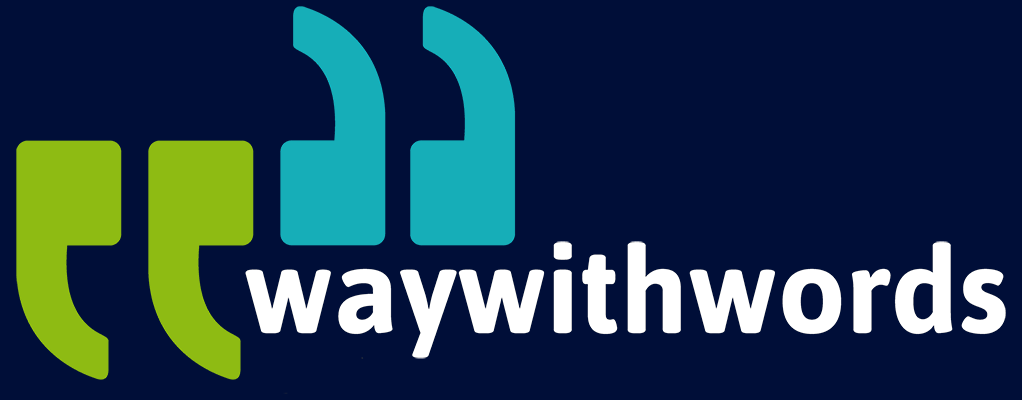How Do You Structure a Multilingual Voice Data Campaign?
Designing a Global Speech Data Collection Project
Global technology markets increasingly demand accurate, diverse, and representative speech datasets. From virtual assistants and customer service bots to speech-enabled medical devices, companies need voice data that captures how real people communicate across regions, dialects, and social contexts. This is where structuring a multilingual voice data campaign becomes critical, especially to help manage the challenge of loanwords. Without careful planning and execution, projects can fail to deliver the diversity and quality required to train reliable AI systems.
A multilingual speech project requires a structured approach that moves beyond simply recording voices in different languages. It needs to incorporate planning, recruitment, localisation, data handling, and ongoing quality assurance. Each stage directly impacts the usability of the resulting datasets, shaping how well future speech technologies will perform in real-world environments.
This article explores the major steps in building a multilingual campaign, from initial planning through to reporting and feedback loops. The aim is to provide an accessible yet detailed framework for anyone tasked with designing or managing a global speech data collection project.
Planning a Multilingual Campaign
Any successful voice data campaign setup begins with precise planning. Unlike monolingual projects, multilingual campaigns must account for cross-cultural and regional variation, legal frameworks, and technical requirements. Poor planning at this stage often results in costly corrections later.
Defining objectives is the first step. Organisations must clarify:
- Which languages and dialects are required. For example, “Spanish” may cover Iberian Spanish, Latin American Spanish, or even regional variants like Rioplatense.
- What accents or sociolects are relevant to the target product. Voice assistants in North America might need exposure to Canadian English, African American Vernacular English (AAVE), or Southern U.S. English.
- The intended use case. Data for conversational AI differs from datasets designed for medical transcription or in-car navigation.
Next comes team roles and responsibilities. Campaigns usually require:
- A central project manager overseeing timelines and deliverables.
- Local language coordinators who manage translations, prompt adaptations, and participant support.
- Technical staff to handle pipelines, metadata systems, and integrations.
- Compliance officers to ensure data protection and consent requirements are met in each jurisdiction.
Budgeting is equally critical. Costs are not limited to participant payments; they also include translation, localisation, platform development, validation, and data storage. Campaign managers must also build in contingencies for unexpected recruitment challenges in lower-resource languages.
Finally, consent protocol alignment must be secured. Different regions have varying laws on recording, storing, and transferring speech data. For instance, GDPR in Europe requires strict consent and anonymisation processes, while other countries may impose unique data residency requirements. Aligning all consent forms and protocols early prevents legal conflicts and protects both participants and the organisation.
In short, planning a multilingual campaign is about creating a foundation that ensures operational clarity and compliance while enabling scalability. Without this groundwork, even the best recruitment or technical execution may fall short.
Recruitment and Speaker Sourcing
Once the framework is set, the next challenge is sourcing participants. Recruitment for multilingual speech projects is complex because datasets must represent the full diversity of how people speak. It’s not enough to find fluent speakers; campaigns must recruit across geographies, genders, age groups, and social backgrounds.
Geographic diversity is essential because the same language may sound very different across regions. Arabic, for instance, includes Egyptian, Gulf, Levantine, and Maghrebi varieties, each with unique features. Collecting from only one region risks producing biased models.
Gender balance is another priority. Speech recognition systems historically underperform with female voices because datasets were often male-dominated. Ensuring a 50/50 gender split—or better yet, a spectrum reflecting non-binary and diverse gender identities—makes datasets more inclusive and accurate.
Age diversity is equally important. Voices change with age, affecting pitch, clarity, and rhythm. Including children, young adults, middle-aged participants, and seniors ensures AI systems perform reliably for users across the age spectrum.
Dialectal and sociolectal variation must also be represented. Within a single city, working-class and upper-class speakers may pronounce words differently. Likewise, rural versus urban speakers often display noticeable distinctions.
Recruiting at scale across these categories requires a structured sourcing strategy:
- Partnerships with universities, NGOs, or community groups that can connect to local populations.
- Digital recruitment through social media, multilingual ads, and participant platforms.
- Incentive structures that are culturally appropriate and fair.
- Screening processes to verify linguistic background before recording begins.
Finally, recruitment must address ethical considerations. Participants should understand how their voices will be used, whether for AI training, linguistic research, or commercial applications. They must also be fairly compensated in line with local standards. This not only ensures compliance but also builds trust, which is vital when expanding into underrepresented communities.
A strong recruitment strategy ensures that datasets reflect the complexity of real human communication, rather than a narrow slice of speakers.
Content Localisation for Prompts and Instructions
Designing the right content for recordings is just as important as recruiting the right speakers. Voice data campaign setup depends on localising prompts, instructions, and supporting material so that participants fully understand and engage with the task.
At the centre are scripts—the sentences or phrases participants are asked to read or repeat. Simply translating a script word-for-word is not enough. Scripts must be localised so they sound natural in each language and capture relevant phonetic or lexical diversity. For example, English prompts about “snow” may not resonate in equatorial regions, while idiomatic phrases often lose meaning when directly translated.
Consent forms also require localisation. Legal language must be accurately translated into each language, but it must also be understandable to the average participant. Overly complex or literal translations can confuse participants, undermining genuine informed consent.
User interface (UI) elements such as buttons, instructions, and error messages must be adapted for each language. If participants do not clearly understand what to do, errors and incomplete recordings increase, raising project costs.
Pronunciation guides are another critical element. In some languages, spelling does not directly reflect pronunciation. Providing phonetic support ensures participants pronounce prompts as intended, reducing variability that can confuse validation systems.
Best practices in localisation include:
- Using native linguists to translate and adapt materials.
- Back-translation checks to confirm accuracy.
- Piloting scripts with a small group before full rollout.
- Regularly updating prompts to reflect cultural relevance.
Content localisation bridges the gap between central campaign planning and the reality of participants recording speech. Without it, even the best-designed recruitment strategies can falter, as participants struggle to understand tasks or feel disconnected from irrelevant prompts.

Data Management and Workflow
With recruitment and localisation in place, the focus shifts to data management. Multilingual campaigns generate massive volumes of recordings, metadata, and annotations, which must be organised into efficient workflows.
File naming conventions are the backbone of data organisation. Each recording should be uniquely identifiable by language, speaker ID, session, and prompt. A poorly designed naming system can cause confusion, duplication, and data loss.
Metadata handling is equally important. Metadata typically includes speaker demographics (age, gender, region), recording conditions (device type, environment), and task details (prompt ID, session length). Well-structured metadata allows datasets to be filtered, balanced, and validated for research or commercial use.
Validation stages help maintain quality. These usually include:
- Automated checks to detect clipping, silence, or background noise.
- Manual audits by native speakers to confirm pronunciation and accuracy.
- Statistical sampling to measure error rates across subsets.
A scalable multilingual pipeline integrates all these steps. Ideally, recordings flow automatically from collection platforms into validation systems, with metadata attached and errors flagged in real time.
Data security is also crucial. Multilingual projects often involve cross-border data transfer, which raises compliance issues. Encryption, secure servers, and strict access controls ensure recordings are protected and participant privacy is preserved.
Finally, workflows should be designed for scalability. Campaigns that start with a handful of languages may expand to dozens. Flexible platforms, modular systems, and clear documentation allow new languages to be added without reinventing processes.
Strong data management ensures that the enormous complexity of multilingual voice data is transformed into structured, usable datasets that meet both scientific and commercial needs.
QA, Reporting, and Feedback Loops
No multilingual campaign is complete without robust quality assurance (QA) and reporting systems. Unlike monolingual projects, where issues may be easier to spot, multilingual campaigns face region-specific challenges that require constant monitoring.
Real-time dashboards are increasingly used to track campaign progress. These allow project managers to monitor key metrics such as number of recordings, participant completion rates, and error frequencies by language. Dashboards make it possible to identify bottlenecks—such as one region falling behind schedule—before they escalate.
Reporting by language provides transparency and accountability. Stakeholders should receive regular updates that detail progress for each language, including demographic breakdowns, quality scores, and completion rates. This ensures that underrepresented groups are not overlooked and that the dataset meets the original project objectives.
Feedback loops enable adaptive improvements. For example, if participants in one region struggle with unclear prompts, localisation teams can adjust scripts mid-campaign. If recording devices in rural areas produce excessive background noise, instructions can be updated to suggest quieter environments.
Key QA techniques include:
- Double-checking metadata against speaker demographics.
- Random sampling for manual review by native speakers.
- Statistical analysis of error types across languages.
- Benchmarking results against expected phonetic coverage.
The ultimate aim of QA is not only to correct errors but also to learn from them. Each campaign generates insights into what works and what doesn’t. These lessons inform future projects, creating a cycle of continuous improvement.
By embedding QA and feedback systems into the workflow, organisations ensure that multilingual datasets are both reliable and representative, maximising their long-term value for AI training and linguistic research.
Final Thoughts on Multilingual Speech Projects
Structuring a multilingual voice data campaign requires far more than recording speech in multiple languages. It is a carefully orchestrated process involving planning, recruitment, localisation, data management, and quality assurance. Each stage builds upon the last, ensuring that datasets are inclusive, representative, and fit for purpose.
As speech technologies continue to expand globally, the demand for diverse and accurate datasets will only grow. Organisations that invest in well-structured multilingual campaigns today will be best placed to lead tomorrow’s AI landscape.
For speech data operations leads, global AI teams, and field research managers, the message is clear: success depends on structure. By following the framework outlined in this article, teams can navigate the complexity of multilingual projects and deliver datasets that drive innovation worldwide.
Resources and Links
Multilingualism: Wikipedia – Explains multilingualism in populations and its implications for technology and communication.
Way With Words: Speech Collection – Way With Words excels in real-time speech data processing, leveraging advanced technologies for immediate data analysis and response. Their solutions support critical applications across industries, ensuring real-time decision-making and operational efficiency.
